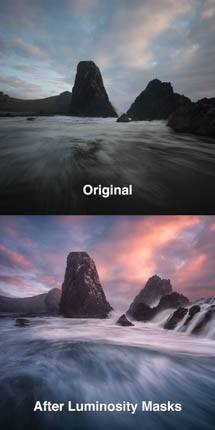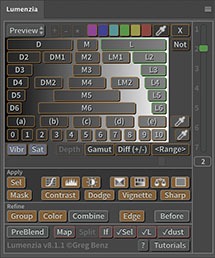Adobe just released an awesome new AI-based feature for your RAW files: “generative remove“. This allows you to do much more advanced cleanup right with much less work. In the past, you could easily remove dust spots or do simple cloning – but even moderately more complicated jobs often required Photoshop. Not only does that add extra work and time, but it forces you to work on rasterized data. That meant you couldn’t update the RAW later without having to redo any cloning work.
You can now tackle much more complex jobs right in the RAW, like removing the branches as shown in this tutorial video.
Workflow for Generative Remove:
- Activate the remove tool (Q in LR, B in ACR)
- Set the mode to “remove” (pencil eraser icon)
- Check “generative AI“
- Brush over the target area to fix.
- You can brush multiple times to refine results or add areas which aren’t connected.
- Hold <alt/option> when brushing to remove red target areas (there’s a button, but the keyboard shortcut is much faster).
- Click “apply” when your red target area is ready.
- If you don’t like the initial results, click the “variations” arrow for other choices. If none of the three are ideal, click “refresh”. If you need to go back after refreshing, you can use history.
Tips for working with Generative Remove:
- You may optionally check “object aware” if you want it to help refine your target area. This concept is great, but I find the results are a bit mixed and tend to leave it off. I expect this will keep improving and would be very interested in using it after further enhancement.
- Set the tool overlay to “auto”
- the UI for repaired areas will hide when you move the cursor out of the image
- you’ll see an outline of the selected move pin, and can easily select others as needed for review or deletion (to undo).
- Click the eyeball icon at bottom left of the remove panel to see before / after.
- Be sure to combine with the healing brush (band aid icon), sometimes that tool works better for small areas and these tools work great together.
- Once you apply, there is no way to refine the targeted shape, but you can move it or change the variation. Just delete and redo if your target area isn’t working.
- Note that generative remove is like generative fill, but without a way for you to provide text input. You’re effectively deleting part of the image and asking the AI to fill it with something it would expect there. This has a couple implications:
- Margins matter. For example: if you want to delete a license plate, paint it out to the edges. But if you want to simply remove the current license plate number, don’t go to the edges.
- You can use this like generative fill. If you remove the face of an animal, the AI will likely see the body and generate a new face. I’ve found this works well in some cases, but not others (faces, hands, and feet for people tend to not work well with this initial release).
- Leave opacity at 100% (anything less will just cause ghosting or poor results)
What is the best “order of operations” for LR / ACR?
The order in which you make some changes matters. For example, the remove tool affects any AI masks you might create later (and existing ones are not updated automatically).
So I recommend you consider the following order for your RAW editing workflow to avoid unexpected results:
- Denoise first:
- This will affect both remove and any AI masks.
- The impact is minor, so I wouldn’t sweat if you need to remove noise later – but you might want to check and see if you need to update anything else.
- Generative Remove:
- (at least be aware that it will use data outside your visible crop, and that it can affect lens blur)
- You can generally safely proceed with other edits (but remember that the active state of the image can affect some tools like masks)
- Use last: point color (it’s very dependent on other edits)
Generative Remove is supported in Lightroom Classic v13.3, LR Desktop v7.3, and Adobe Camera RAW16.3

